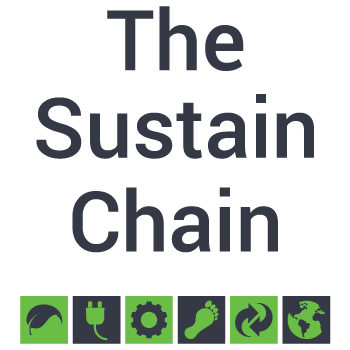
A good logistics company addresses the demands of both producers and consumers and employs a comprehensive operations management unit. It only makes sense if operations in different regions work together to increase efficiency. This simplicity for the logistics department makes handling every component of a supply chain much more manageable. To do so, logistics companies can integrate environmental data through APIs and alerts.
Here are seven practical ways in which logistics companies can use environmental and climate data to drive process efficiency:
Boost Logistics Operation Visibility
It is critical to ensure that your company is agile and capable of adapting to uncertainties. Companies can improve their scalability and adaptability by forecasting weather discrepancies that might occur. Companies can realign processes to prepare for the unexpected by considering environmental data input.
Environmental data such as weather API and air quality API help companies develop more carbon-neutral supply chain initiatives. Because of the current environment, organisations must clearly define their operations management plans and vision to stay on track. Any expenditure in the process must be made to support supply chain infrastructure.
Choose the Most Suitable Distribution Vendors
It is nearly impossible to overstate how critical it is to identify the most qualified distribution operators. When it comes to selecting distributors, price is not the only consideration. The most crucial thing is choosing vendors whose performance adapts to the latest micro-climate. Environmental data enables you to select the most efficient method to carry out the process and lets you fulfill your role of providing your customers with the highest possible quality.
It’s vital to undertake a thorough investigation to find vendors who maintain excellent quality, customer service, and on-time deliveries and are equipped with environmental data updates to determine the most accessible routes for delivery. This not only helps you save costs but simplifies last-mile delivery.
Create Lean Supply Chain
Successful supply chains are lean, cost-effective, and dependable. So, if you want to reduce your supply chain costs while maintaining the reliability of your process, integrate AI-based operations management systems. These systems are powered by environmental data such as air quality, weather, and forest fire. The insights from these datasets can help reassess your supply chain strategy and goals to employ the best possible approach for your firm.
Automate Your Logistics Operations
The use of digital technologies to increase efficiency, connect vehicles to headquarters, and streamline procedures within logistics operations is known as logistics automation. Intelligent technologies such as Robotic Process Automation, Digital Process Automation, Artificial Intelligence, and Machine Learning that are backed with environmental data are used.
Automation based on weather and air quality intelligence has altered how businesses work. From self-driving cars to factory robots, it is one of the most significant advancements in human history. It can also be utilised to assist in managing and optimising supply chain activities. Companies can use environmental data, artificial intelligence (AI), and automated sorters with Radio Frequency Identification (RFID) technology capabilities. They can also use drone delivery to increase the pace and efficiency of their operations and avoid spoilage in case of a high pollution environment during the delivery route.
Monitor Your System
Environmental data helps logistics companies monitor the systems concerning weather, air quality, and greenhouse gases, and it also helps to make sure the processes are carbon neutral. A temperature monitoring system is also a valuable asset for logistics companies for quality control processes, checking stock quality, and adding value for the customer. Even where customers are responsible for their own environmentally sensitive cargo, monitoring it with environmental parameters assists in developing a reputation for superior warehousing and high service standards.
Similarly, monitoring environmental data, especially weather and air quality forecast data, before and during shipments using indicators reduces product damage and losses incurred during transportation and storage. It also increases customer satisfaction and provides a visible marketing edge over the competition.
Upgrade Your Returns Management
Artificial intelligence (AI) can tackle every aspect of returns processing, from shipping to disposition decisions to recommerce. It can also handle parts of the customer’s journey to prevent returns from occurring in the first place. AI is not a one-size-fits-all approach but can be tailored to every organisation.
AI disposition engines integrated with environmental data are retailers’ most crucial tools in returns management. Retailers that employ this data-driven technology as early in the returns process as possible will see the most profound results.
In short, these applications move returns into the supply chain as quickly as possible, in the most efficient way possible, and at the highest recovery possible. They analyse pertinent factors, including product condition, resale price, processing costs, number of touchpoints required, transportation fees, and storage requirements.
Leverage Modern Technology
An efficient warehouse management system is an integral part of the supply chain. Automation can assist in the timely retrieval of an item from a warehouse and ensure a smooth journey to the customer. AI systems can also solve several warehouse issues more quickly and accurately than a human can, simplify complex procedures, and speed up work. Also, along with saving valuable time, AI-driven automation efforts can significantly reduce the need for and cost of warehouse staff.
The use of a WMS makes it simple to track, document, and analyse the success of your supply chain management system over time. It improves data collecting and, through data analytics, delivers essential insights into the data. It is also possible to have a similar panel on your mobile device, which allows you to arrange your inventory data, handle shipping, monitor distribution, and so on – all from the comfort of the office. Companies can reduce the time-consuming manual involvement and accelerate decision-making through the use of technology. Arguably, technology-driven SCMs play a significant role in assisting organisations in gaining a competitive edge.
Bottom line
According to PwC, AI applications have the power to transform the way business is done and contribute up to $15.7 trillion to the global economy by 2030. Today, AI can help with the much-needed exceptional agility and precision in supply chain optimisation. It can also trigger a transformational increase in operational and supply chain efficiencies and a decrease in costs where repetitive manual tasks can be automated.
Selecting dependable suppliers and logistics providers, developing supply chain sustainability, and facilitating the flow of information throughout your organisation can go a long way toward lowering costs and increasing customer satisfaction. Suppose you want to build an efficient supply chain. In that case, you’ll need to analyse the impact of changing your supply chain management system on operational costs, service provision, working capital, and, most crucially, company revenue.
Know How Companies Use Environmental Data
After understanding what you hope to gain from environmental data in logistics from a broader operational standpoint, assess your organisation’s technology readiness. That assessment should be focused on three components: people, skills, and tools.
Start by consulting with staff to understand the potential impacts of technological transformation. You may want to train existing employees and ensure they know how their responsibilities and workflows will change during and after implementation. This will help make the maximum use of environmental data integration into the operations management system.
Examine your existing technology stack and discuss its advantages and limitations with relevant stakeholders. Interoperability is a critical measure of tech readiness, so try to understand how well your various technologies are working together now. Are our critical applications closed and dependent on vendor services and customisation, or are they interoperable and application programming interface (API)-ready?
Environmental and climate data from providers like Ambee are simple to use. They are available in the form of simplified integratable APIs. The environmental data is accurate, real-time, and has the highest resolution. Each of the environmental datasets has multiple parameters. For instance, pollen data comes with types of pollen and more than 90 sub-species of pollen.

